You are currently browsing the category archive for the ‘Wittgenstein Art’ category.

Peter Porter (1929-)
Wittgenstein’s Dream here.
In Wittgenstein Project/Skolgen (2003), artist Ian Kiaer represents Wittgenstein’s working space in Skolgen, Norway.
Lizzie Carey-Thomas writes: The focus of the project is the small wooden house of vernacular Norwegian design that Wittgenstein commissioned to be built in 1913…
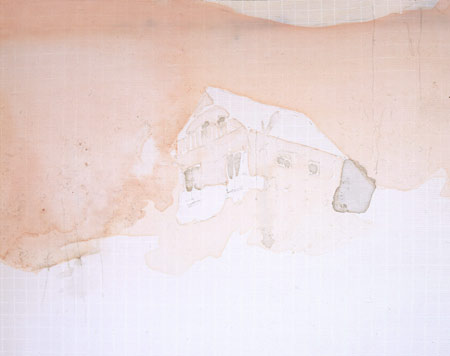
…Overlooking a lake and surrounded by cliffs, it provided Wittgenstein with the almost hermetic conditions he needed to work on Tractatus Logico-Philosophicus. Kiaer’s work consists of an overturned kitchen waste bin, a small pink watercolour and strips of pink Styrofoam lying horizontally on the floor.
The colour guides our reading of the objects as part of a unified landscape and, for Kiaer, is indicative of the romantic nature of Wittgenstein himself.
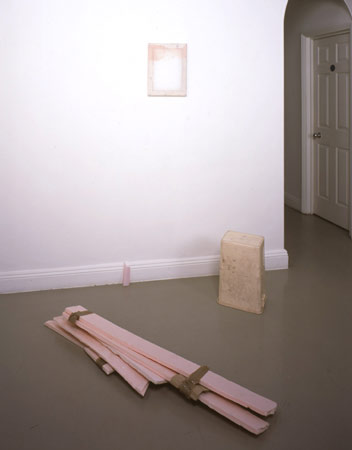
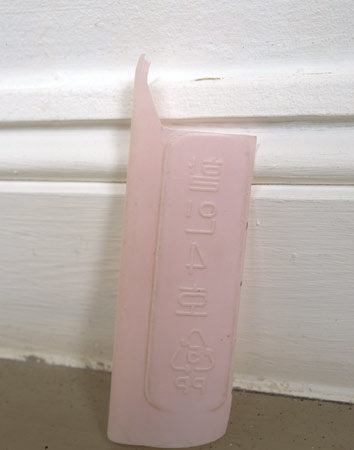
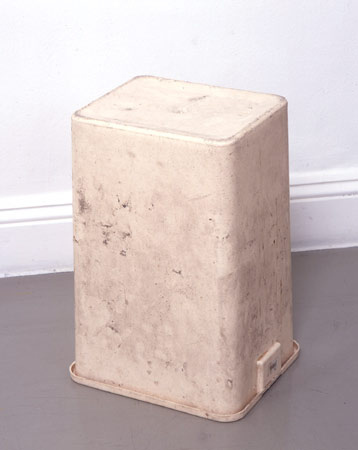
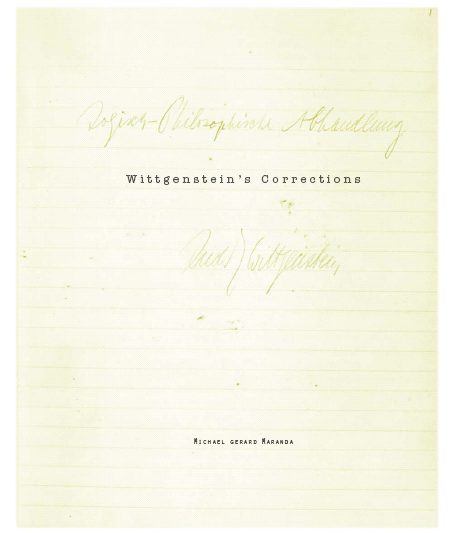
Wittgenstein, in a letter to von Ficker, has this to say about his Tractatus Logico-Philosophicus:
“The book’s point is an ethical one. I once meant to include in the preface a sentence which is not in fact there now but which I will write out for you here. … What I meant to write, then, was this: My work consists of two parts, the one presented here plus all that I have not written. And it is precisely this second part that is the important one. My book draws limits to the sphere of the ethical from the inside as it were, and I am convinced that this is the only rigorous way of drawing those limits.”
This 128 page bookwork is based on a facsimile of the manuscript for this text. Each page has been reproduced with the ‘text’ removed, leaving only corrections and notations. The book also exists in a trade edition. Go here for more on Michael Maranda.


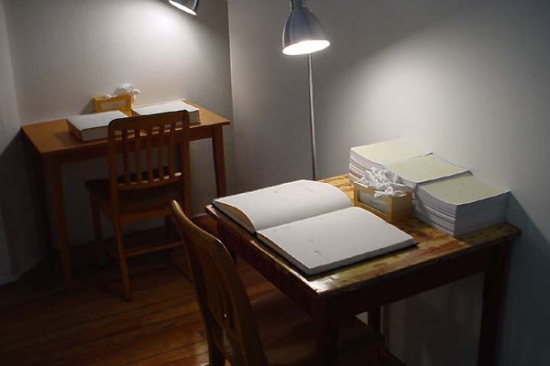
The header above is taken from this image:

The header image of Wittgenstein (above) is entitled “Ludwig von Wittgenstein” by Siegfried Woldhek (2004). Go here for a sample of the entire image.
Two compelling artistic renditions of TLP 5.6 by Tom Phillips: Wittgenstein’s Dilemma, Inverted, 1999; Wittgenstein’s Trap, 1999.


John Pull writes of these cubes:
Both cubes find their structure in words. The calligraphy, fissures of curve and isoscelean angles that grew from the wire sculptures of 1997, spell out Wittgenstein’s provocative assertion, “The limits of my language are the limits of my world.”
The phrase, spelled out twice on each side of the cubes, manage to simultaneously concur with and refute the statement. The words create the structure, and yet to read them through to the other side, especially in the case of Wittgenstein’s Dilemma Inverted, where they’re printed in reverse, thus requiring the viewer to read through the center of the solid lucite and the infinite shifting reflections therein, the words embody limitlessness.
The two-dimensional letters fuse together to create a three-dimensional structure, which then suggest further dimensions. Are not those further dimensions often painted with the colors of music?
The final scene from Jarman’s Wittgenstein (1993) depicting Wittgenstein on his death-bed attended by Maynard Keynes and the Martian. The script features a narrative inspired by PI 107. Watch here.
David Zwirner Gallery presents A Point in Space is a Place for an Argument. Based on Wittgenstein’s remark in the Tractatus Logicus Philosophicus (2.0131) that “a point in space is an argument place”, the exhibited works explore the interrelations of space, materiality and infinity.
The displayed works symbolize materiality in a variety of ways. Al Taylor rejects traditional media in favor of “non-art” by employing broomsticks to highlight the concept of a spatial object. Isa Genzken’s heavy concrete sculptures, by contrast, represent our understanding of mass and weight. The viewing includes art of 30 different artists, and runs from June 28-August 10.
Happy Famous Artists are Intelligensius Anarchus and Jeff Blind. They are interested in creating conceptual and multimedial art that reflects how the perception of reality interfaces with science, politics, art, and philosophy.
Tractatus Logicus Philosophicus is a project that shows what philosophy looks like as a product brand. The names of famous philosophers replace the names of famous brands. According to the Happy Famous Artists, Wittgenstein’s TLP is mostly remembered for its famous last words: “Whereof we cannot speak, we must remain silent”. Hence the brand: “Wittgenstein – Coca-Cola Light” (2005-2006).
I like the interface between Wittgenstein’s oeuvre and the ad-value of “light”. Nice irony. For more philosopher-user products by the Happy Famous Artists, go here.



Recent Comments